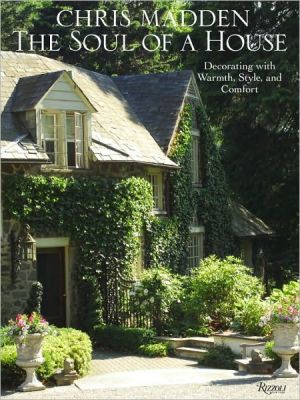Beatrix Farrand: Private Gardens, Public Landscapes
Beatrix Farrand: Private Gardens, Public Landscapes presents the life and work of one of the foremost landscape designers of the early 1900s. Born into a prominent New York family (she was the niece of Edith Wharton), Farrand eschewed the traditional social life of the Gilded Age to pursue her passion for landscape and plants. Many of her clients were members of the highest echelon of society with estates in Newport, the Berkshires, and Maine, but Farrand ultimately became a consultant for...
Search in google:
Beatrix Farrand: Private Gardens, Public Landscapes presents the life and work of one of the foremost landscape designers of the early 1900s. Born into a prominent New York family (she was the niece of Edith Wharton), Farrand eschewed the traditional social life of the Gilded Age to pursue her passion for landscape and plants. Many of her clients were members of the highest echelon of society with estates in Newport, the Berkshires, and Maine, but Farrand ultimately became a consultant for university campuses, including Yale and Princeton, and for public gardens, including the Santa Barbara Botanic Garden and the Rose Garden at The New York Botanical Garden. Perhaps her best-known work is the extensive garden at Dumbarton Oaks, originally a private residence and now a research institute of Harvard University.Deeply influenced by the English landscape designer Gertrude Jekyll, Farrand was known for broad expanses of lawn with deep swaths of borders planted in a subtle palette of foliage and flowers. Her gardens have been photographed at their peak especially for this book, and these lush illustrations are complemented by beautiful watercolor wash renderings of her designs, now preserved at the library of the University of California at Berkeley.The New York Times - Dominique BrowningThis book brings to life the gardens of a nascent and grand American landscape style, influenced by European gardens, modified for the nouveaux riches. You might want to get out a magnifying glass to view Farrand's meticulous plans, a trove of inspiration. For English majors, this book does double duty as a companion to [Edith Wharton's] novels.
From: Introduction\ “No life is well-rounded without the subtle inspiration of beauty.” (1926)\ Beatrix Farrand (1872-1959) was one of America's most celebrated landscape architects. She was renowned for the private estate gardens she designed for the cream of East Coast society as well as for her work as a landscape consultant at some of the country's most prestigious private universities and colleges. Dumbarton Oaks in Washington, D.C., the Abby Aldrich Rockefeller Garden in Maine, and the old campus at Princeton University are among her most visible masterpieces today. Variously praised as “the Gertrude Jekyll of America” and “the doyenne of her profession,” Farrand owed her success to her unerring eye for design, profound knowledge of horticulture, phenomenal energy, and deep commitment to her profession that inspired others to follow in her footsteps.\ Beatrix Farrand was widely traveled and well versed in design arts and history, and she also brought her intellect, artistic creativity, and integrity to bear in her work. She was influenced in particular by André Le Nôtre, whose grand parterres inspired many of her designs; William Robinson, who popularized naturalistic gardening; Gertrude Jekyll, who revolutionized the art of planting; and Charles Sprague Sargent, her first instructor, who opened her eyes to horticulture and design. She was famous for her flower borders planted in broad washes of color, in arrangements loosely based on Jekyll's popular theories, as well as for her advocacy of native landscapes and plants, which she skillfully wove into a classical design framework. She championed the concept of vertical gardening, pinning shrubs and climbers to walls to save space, a useful technique in her university work, where the emphasis tended to be on the buildings rather than the plantings.Her landscapes were never flamboyant, always showing restraint, and many lasted as long as they did because of her vigilance about maintenance.\ During her fifty-year career, Farrand received more than two hundred commissions from some of the foremost financiers, arts patrons, and educators of the day, mostly scions of Old Guard families from New York, Philadelphia, and Boston who were part of her social circle. J. Pierpont Morgan, Edward Harkness, Theodore Roosevelt, First Lady Ellen Wilson, and John D. Rockefeller Jr. were among her most well-known clients. The close working relationships she had with her best clients, notably Mildred Bliss, Dorothy Payne Whitney, and Abby Aldrich Rockefeller, contributed greatly to the results she was able to achieve. Farrand also collaborated with many fashionable architects of the day, including Delano & Aldrich, Ralph Adams Cram, Carrère & Hastings, Bertram Goodhue, and James Gamble Rogers, but she wielded an iron hand when working with them.\ Beatrix Farrand embarked on her career in the 1890s, when she was in her early twenties, at a time when upper-class women typically did not take up a profession. She prepared by engaging private tutors, since there were no formal courses in the landscape arts at the time. Farrand's early professional accomplishments and patrician background led to an invitation to be among the charter fellows of the American Society of Landscape Architects (ASLA). Today she is recognized as the earliest American woman to maintain a successful landscape practice and the first to rise above the invisible line between garden design, to which women were often restricted in the early days, and landscape architecture, a field that was dominated by men.\ In addition to devoting nearly five decades to private clients-a practice that began when America was on the cusp of a golden age of estate building and came to an end in a period of postwar austerity-she also established a landscape study center at Reef Point, in Maine, where students benefited from demonstration gardens, an herbarium, and an extensive reference library and print collection that she had assembled over many years. Farrand's gift of her professional papers and collections to a university archive at the end of her life set a precedent among other landscape architects to similarly value their work.\ Glamorous as her career may have seemed, it was fraught with disappointments, including a meager practice in California in the 1930s after years of acclaim on the East Coast, financial repercussions attributable to a changing economy, problems related to family trusts, and the dissolution of Reef Point in 1955, four years before her death. Much has been said about this final, painful chapter in her life, when she chose to dismantle her home and disperse her horticultural and professional collections. Happily, she found contentment in her last home, Garland Farm, surrounded by the plants and people she loved. Garland Farm now serves as the headquarters of the Beatrix Farrand Society, whose mission is to reestablish Farrand's educational agenda.
Preface 6Introduction 91 The Education of a Landscape Gardener 172 From Society Girl to Career Woman 273 A Style of Her Own 414 The Garden as a Picture 575 Two Early Heirloom Gardens 696 Long Island Country Estates 837 Gardening by the Sea 998 The Abby Aldrich Rockefeller Garden 1179 Three Connecticut Gardens Bloom Again 12510 Dumbarton Oaks 14311 Collegiate Landscapes 15912 California and Beyond 17313 Reef Point and Its Legacy 19314 A Garden in Eden 205Notes 212Bibliography 223Autobiographical Statement 228List of Commissions 230Places To Visit 234Index 235Acknowledgments 239Credits 240
\ Dominique BrowningThis book brings to life the gardens of a nascent and grand American landscape style, influenced by European gardens, modified for the nouveaux riches. You might want to get out a magnifying glass to view Farrand's meticulous plans, a trove of inspiration. For English majors, this book does double duty as a companion to [Edith Wharton's] novels.\ —The New York Times\ \








